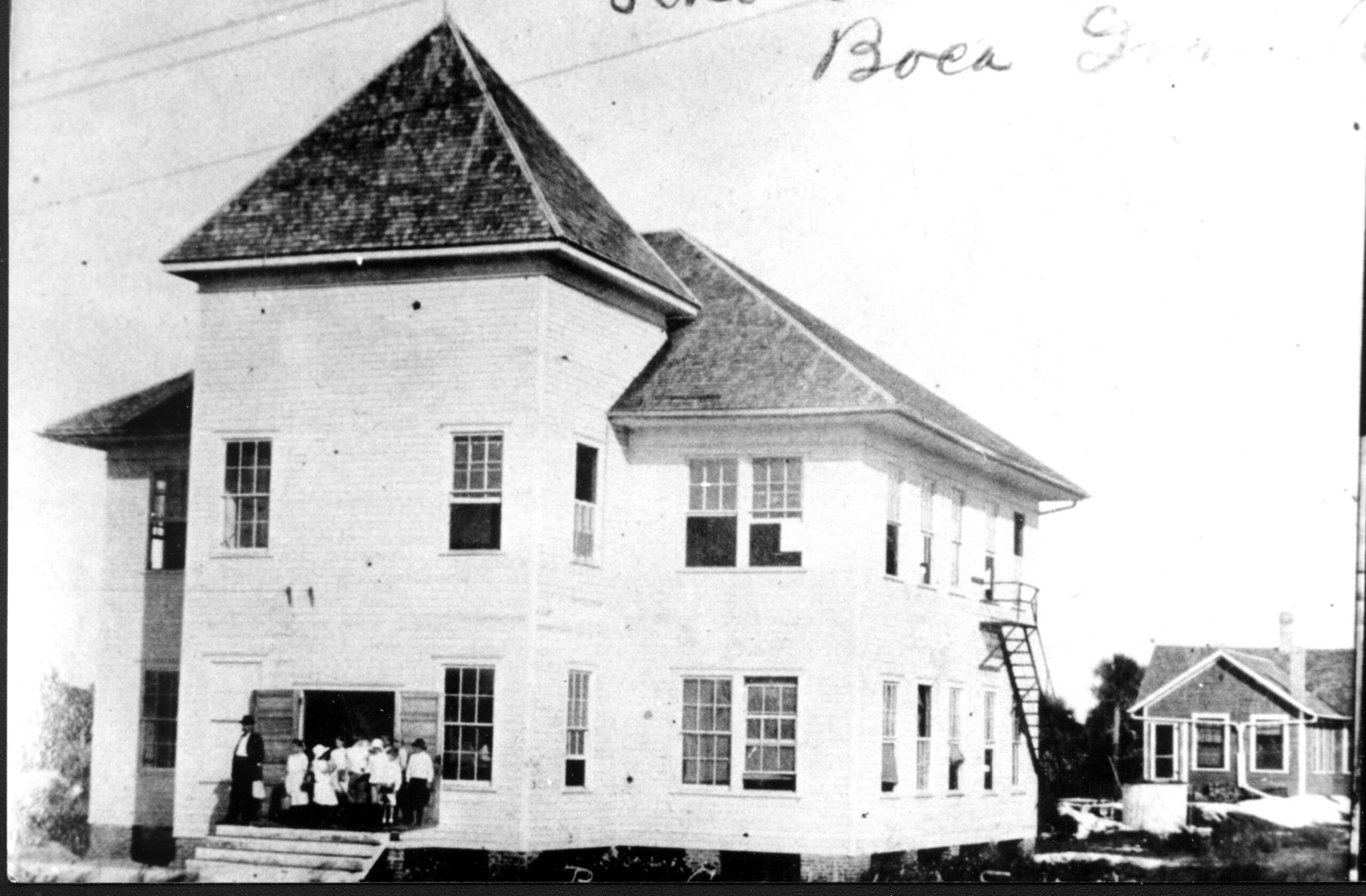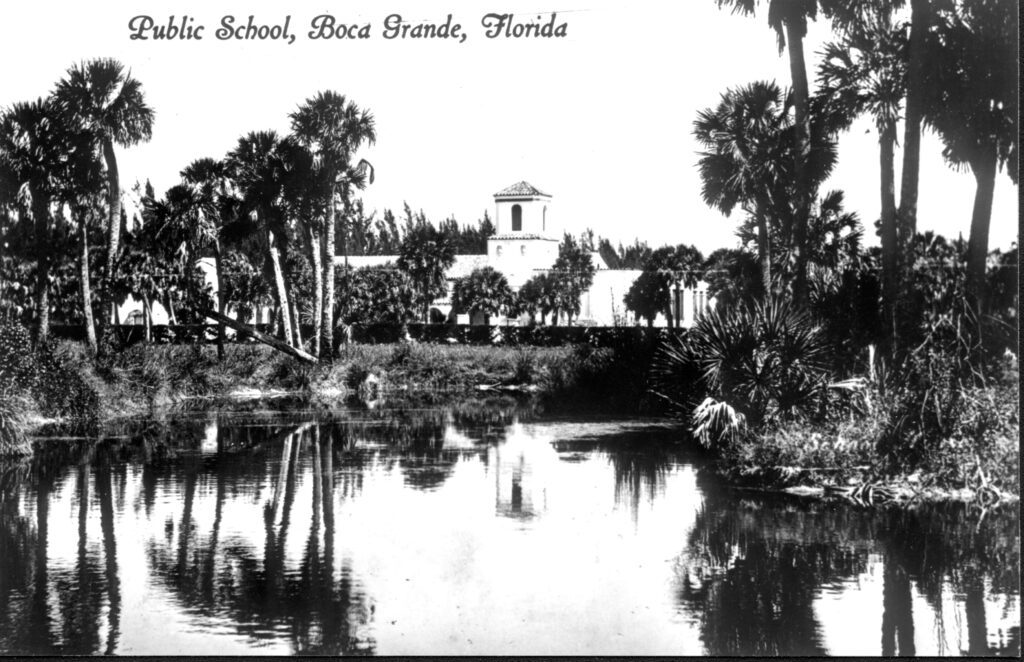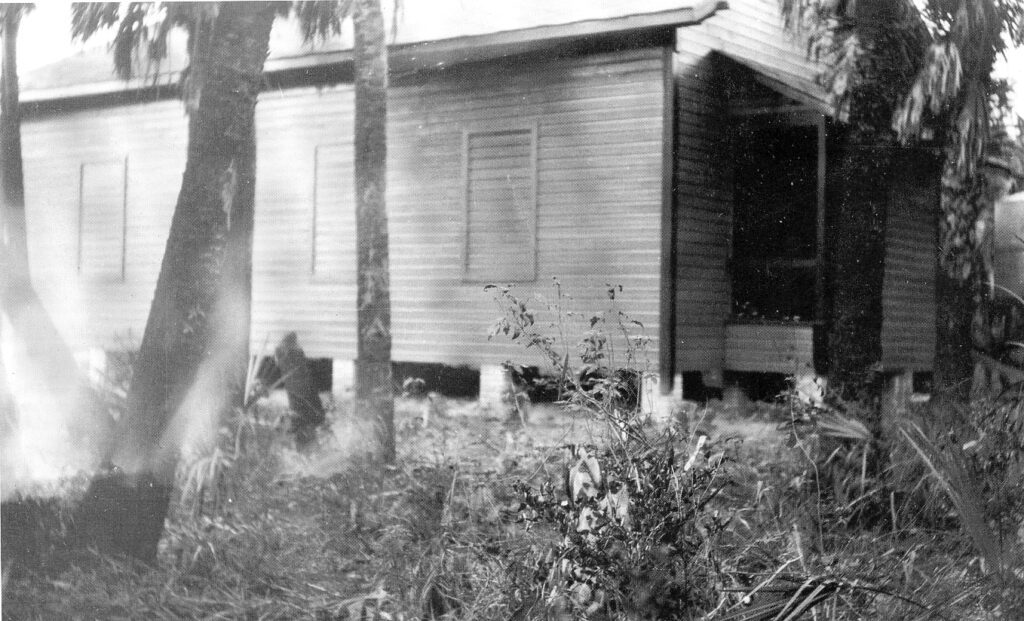History: A primer on the school buildings of Boca Grande

BY KIM KYLE
From 1893 to 1908 there was a school located on 4th Street in a frame building. The building may have also been used as a church. The first school on Gasparilla at the north end of the island was in a bunk house that was no longer used by the railroad. Around 1916 a small schoolhouse was built, and eventually the children were bused to Boca Grande.
The Boca Grande School district bonded itself and began construction of a new school on the corner of Gilchrist Avenue near First Street around 1911. In 1914, it became a fine two-story wooden frame building when a second story was added, and painted yellow. There were four classrooms, two downstairs and two upstairs, with bathrooms on each floor. Drinking water was provided by large cypress water tanks, which stored the rainwater from the roof. After completing the eighth grade, students had to go away to boarding school for high school.
In the late ‘20s it became necessary to build a larger school and provide a high school education for the students of the island and surrounding islands and communities. So, the district was bonded again and a new school, a modern, well-built building of beautiful Spanish architecture, was built in 1929. Francis and Louise Crowninshield were instrumental in securing the land and funds for the Boca Grande School, and also the Crowninshield Community House.
This school provided education for first through 12th grades with fully accredited standing. With students being bused from Port Boca Grande and Gasparilla, and the unique “school boat” bringing students from Cayo Costa, Punta Blanca, Cabbage Key and other points on the bay, some 150 boys and girls attended.
The Boca Grande School closed in 1964 due to declining enrollment, and remained vacant until 1972 when, under a special bill passed by the Florida Legislature, it was deeded to the community for use as a community center. The Boca Grande Woman’s Club, and the Gasparilla Island Conservation and Improvement Association formed an agreement with the Lee County Board of Commissioners to jointly fund the restoration and development of the property into a community center.

Boca Grande Historical Society
In January 1930, the School Board voted to raze the old school near the corner of Gilchrist Avenue and First Street, and construct a duplex Teacherage on the northwest corner of the school property (Park Ave. & Banyan St). Some of the materials used in constructing the Teacherage may have come from the old school. One apartment in the frame Teacherage was provided free of charge to the school’s principal and his family, while the other was usually occupied by one or more teachers.
The Teacherage was vacant from 1964, when the Boca Grande School closed (now the Community Center) until 1971, when it was converted to an office/residence for the Lee County Department of Transportation, and for a brief time it was also used as rental apartments. Renovated in 2005 by Lee County, today the Historic Teacherage houses Boca Bargains, a thrift store run by the Woman’s Club, and The Boca Grande Historical Society & History Center.

A school for the Black children was located at the south end of Gasparilla Island, which was first housed in a rented church building in 1925. In 1927 money was raised to build a school that went up to the 8th grade, funded in part by The Julius Rosenwald Fund. To help, a subscription sheet was passed around by Louise du Pont Crowninshield among the wealthy families and tourists on Boca Grande. That school was located near the railroad yard, where dock workers lived in quarters. The school closed in 1965. Long-time residents of the island recall that it burned down in a fire.
The only known photo of it is housed in the Fisk University Rosenwald Fund Card File Database.
Kim Kyle is administrative director of the Boca Grande Historical Society.









